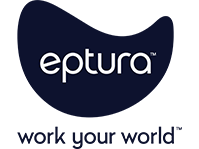In episode 341, host Mike Petrusky speaks with Jamie Woolf, co-founder and CEO of Creativity Partners and the first Director of Culture at Pixar Animation Studios. They talk about her time at Pixar and explore the ways physical environments and organizational culture can facilitate creative thinking and collaboration. Woolf explains why she believes that infusing play and creativity into the workplace can enhance problem-solving and overall well-being as organizations move away from a strict focus on efficiency and profitability. Good ideas can come from anyone, regardless of their position in the organization, and leaders should be curious and open to all ideas. She also describes how the physical work environment can facilitate “casual collisions” between different departments to foster creativity.
Agenda
- Role of creativity and innovation in the workplace
- Woolf’s background and her experiences at Pixar
- Practical advice for creating more meaningful work environments
What you need to know: Workplace takeaways
Takeaway 1: Creativity and innovation in the workplace require a mindset shift from efficiency and routine to embracing the unexpected and valuing diverse perspectives
Woolf explains why it’s important to find joy in work and not to get too distracted by the chaos of daily tasks. Otherwise, people lose motivation and feel like they’re stuck on a treadmill.
“We go to work, and some days are a slog and other days are motivating. We need to find meaning and joy and not get too distracted,” Woolf explains.
In fact, motivation comes when you move away from the typical efficiency-focused mindset. “With innovation, it’s a little bit more circuitous. It’s a little bit more of a journey and it’s a little bit messier,” she says.
People also need to expand where they expect to find good ideas, says Woolf. She highlights the importance of valuing ideas from all levels of the organization, drawing on the Pixar mantra “Good ideas come from anyone.”
And it’s this inclusive approach that fosters a culture where creativity flourishes and everyone feels empowered to contribute.
Takeaway 2: The physical environment plays a crucial role in fostering creativity and collaboration among team members
Organizations can design physical workspaces to encourage spontaneous interactions and idea sharing.
Woolf on her experience as Pixar: “Steve Jobs, he saw the building as his film. He used to say, the building at Pixar, which we call the atrium, needed to speak creativity, but it also needed to be a place where there weren’t like hallways and cubicles that divide people.”
She shares another example of this principle, by paraphrasing Ed Catmull, former president of Pixar: “The table needs to be bigger because there are some people that are sitting in chairs behind the table, and that’s creating a caste system. We need a table where everyone can fit around and be literally and figuratively at the table feeling equally valued.”
The physical environment can even influence how people feel and approach their work.
“The built environment is so important to how we feel, how we approach work. It really is. I’m just so intrigued with the work that your audience is doing around what it means to be inside environments and how that has such a powerful force of how we feel and how we approach our work,” she explains.
Takeaway 3: Encouraging a culture of curiosity and deep listening can lead to groundbreaking ideas and solutions
Leaders should be present and engaged in the day-to-day operations of their teams.
“I always say to leaders, if you’re not kind of out in the trenches, whatever that is, to see what’s really happening on the ground, how are things working or not working,” Woolf says.
And an important part of engagement is listening.
Her advice for leaders: “We have to get really curious about weird quirky, half-baked ideas and lean in to listening deeply, asking good questions.” Leaders should be asking themselves, “Does the person with the least power in the room feel that their ideas are valued?”
Workplace management insights
- Importance of infusing play and creativity into the workplace to enhance problem-solving and team dynamics
- Necessity of adopting a mindset that embraces the messiness and circuitous nature of innovation, rather than focusing solely on efficiency
- Value of listening to and valuing ideas from all levels of the organization, not just those at the top
- Significance of the physical environment in fostering creative collisions and breaking down silos between departments
- Importance of finding meaning and joy in work to counteract the treadmill effect of daily tasks and efficiency-focused mindsets
Do a deep dive into more workplace insights by exploring all Workplace Innovator podcast episodes.





